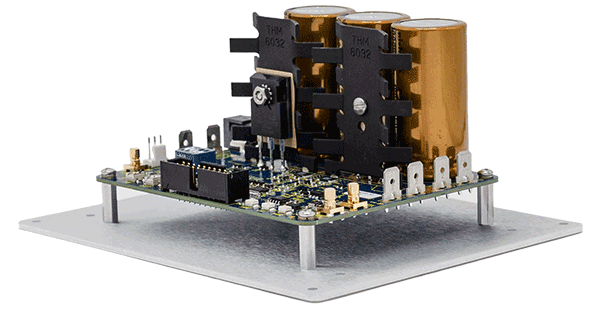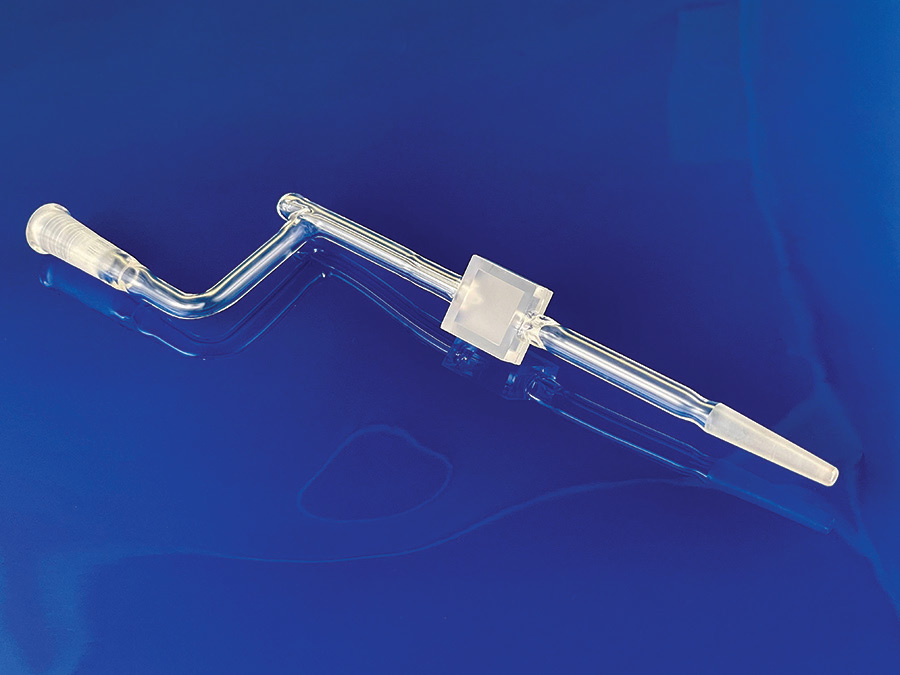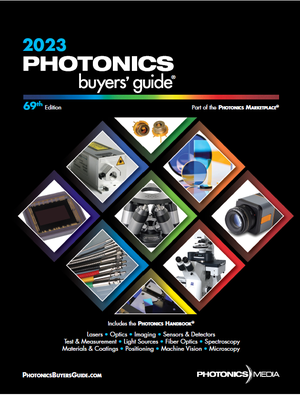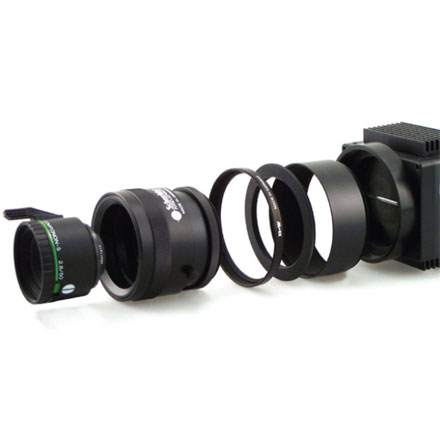
< More Photonics Spectra Monthly NewsletterSubscribe to our E-NewslettersPhotonics Spectra Monthly — Metalenses Scale Up, Gas Analysis Probes Upgrades, Supercontinuum Lasers Illuminate a Bright Future (3/8/2023)
Photonics Spectra Monthly — Metalenses Scale Up, Gas Analysis Probes Upgrades, Supercontinuum Lasers Illuminate a Bright Future
Monthly newsletter from the editors of Photonics Spectra, with features, popular topics, new products, and what's coming in the next issue.
| If you are having problems seeing this newsletter, please click here to view |

|
Monthly newsletter from the editors of Photonics Spectra, with features, popular topics, new products, and what's coming in the next issue. Manage your Photonics Media membership at Photonics.com/subscribe.
|
|
Metalenses Scale Up to Target the Market for Small Optics
Earlier this year, the first wave of smartphones equipped with STMicroelectronics’ second-generation direct time-of-flight sensor reached the consumer market. The sensor includes planar metasurface optics. The rollout of the smartphones, made possible through a partnership between STMicroelectronics and the Boston-based startup Metalenz, represents the introduction of the world’s first consumer electronics device with this type of optical metasurface technology. The metalenses for STMicroelectronics’ new direct TOF sensor are composed of a binary structure of nanopillars etched onto thin glass wafers. The nanopillars enable control of light in ways that would be unachievable with conventional refractive lenses.
|
|
|
|
|
Photonic Gas Analysis Probes Upgrades in Sources and Detectors
Photonics-based gas analysis employs a number of techniques and component technologies, including light sources and detectors, along with an array of mirrors, lenses, gratings, and other optical components. But all of these techniques and systems effectively take the same approach to gathering data: They send light of a particular wavelength through a gas sample contained within a very specific path length and collect data based on how optical energy interacts with the sample. The signal data produced depends upon the intensity and path length of the light — both controllable, and therefore known, variables — and the concentration of absorbing molecules.
|
|
|
|
|
Smaller, Simpler Supercontinuum Lasers Illuminate a Bright Future
As broadband light sources, supercontinuum lasers are a truly revolutionary technology. While halogen light sources — or even a normal tungsten bulb — can emit a large bandwidth of light, supercontinuum generation (SCG) derives from a laser source and is highly coherent. Unlike traditional bulbs, a supercontinuum laser’s noise fluctuations in amplitude and phase match those of conventional laser standards.
|
|
|
|
|
 D100 Compact 250A Laser Driver
D100 Compact 250A Laser Driver
Highland Technology Inc.
The D100 is a constant-current pulsed laser driver ideal for powering pulsed laser bar arrays. Current/pulse width can be set by on-board trimpots or user-provided signals. A compact PCB outline makes the D100 well suited for bench laser evaluation and embedded OEM applications.
|
|
|
 Norland Optical Splice
Norland Optical Splice
Norland Products Inc.
Norland’s optical splice provides a high-performance connection for optic fibers in a unique one-piece design.
|
|
|
|
| |
 Custom Optical Flow Cell
Custom Optical Flow Cell
Spectrocell Inc.
This unique cell is a challenge for most but not for us at Spectrocell. Because of its use in a high-radiation environment, this cell required special construction using fused silica with minimal metallic impurities. In addition to that, it required a 0.35-mm window, no distortions, and a 2-mm thermowell sitting at the top of the optical section of the cell.
|
|
|
 The 2023 Photonics Buyers’ Guide
The 2023 Photonics Buyers’ Guide
Photonics Media
The 2023 edition is now available with over 4000 companies, 1600 product categories, and 30 Handbook articles. Use coupon code HP23 for a special offer!
|
|
|
|
| |
|
Nanowire-Based Detector Makes High-Speed Quantum Communication Practical
NASA researchers have developed a detector that precisely measures single photons at high rates and could help to make high-speed quantum communication practical. The detector, created by researchers led by Matthew Shaw at NASA’s Jet Propulsion Laboratory, is called PEACOQ (performance-enhanced array for counting optical quanta). PEACOQ is made from 32 niobium nitride superconducting nanowires on a silicon chip. This nanowire architecture, said research team member Ioana Craiciu, a postdoctoral scholar, enables high count rates with high precision.
|
|
|
|
Lockheed Martin achieved first light from the Directed Energy Interceptor for Maneuver Short-Range Air Defense System (DEIMOS), verifying the beam quality of its 50-kW laser architecture developed as part of the U.S. Army’s modernization strategy. The laser weapon system can be integrated into the Stryker combat vehicle to deliver robust directed energy capability to the U.S. Army’s challenging Maneuver Short-Range Air Defense mission.
|
|
Researchers at the Fraunhofer Institute for Organic Electronics, Electron Beam, and Plasma Technology FEP (Fraunhofer FEP) produced hydrophobic, or water-repelling, surfaces that become superhydrophilic, or superwetting, under ultraviolet (UV) light. For solar modules, the creation of a superhydrophilic surface will better protect panels and glass facades from expensive and time-consuming cleanings to remove dirt and other debris that affect performance.
|
|
|
 Understanding the Modulation Transfer Function and Beginning the Lens Selection Process
Understanding the Modulation Transfer Function and Beginning the Lens Selection Process
Tue, Mar 21, 2023 1:00 PM - 2:00 PM EDT
Stuart Singer of Schneider Optics, Inc. discusses how to understand the modulation transfer function (MTF) with respect to lens performance, while avoiding complex math such as fast Fourier transforms. The MTF is often the most important aspect of a lens because it shows how well a lens is able to reproduce the object within its view. Singer shares the steps that are needed to begin selecting a proper lens that meets specific imaging and system requirements. Finally, he details which lenses are appropriate for various imaging systems. Sponsored by Optikos Corporation and Navitar Inc.
|
|
|
|
Features
Lasers in Nuclear Fusion, Optical Gyroscopes, Photovoltaics, and more.
Photonics Media is currently seeking technical feature articles on a variety of topics for publication in our magazine Photonics Spectra. Please submit an informal 100-word abstract to Daniel McCarthy, Senior Editor, at [email protected], or use our online submission form www.photonics.com/submitfeature.aspx.
|
|
|
|
About Photonics Spectra
 Since 1967, Photonics Spectra magazine has defined the science and industry of photonics, providing both technical and practical information for every aspect of the global industry and promoting an international dialogue among the engineers, scientists and end users who develop, commercialize and buy photonics products.
Since 1967, Photonics Spectra magazine has defined the science and industry of photonics, providing both technical and practical information for every aspect of the global industry and promoting an international dialogue among the engineers, scientists and end users who develop, commercialize and buy photonics products.
Visit Photonics.com/subscribe
to manage your Photonics Media membership.
View Digital Edition
Manage Membership
|
|
|
|
